Have You Booked a Cannabis Trade Show Yet?

https://www.proexhibits.com/blog/cannabis-trade-shows/

Marijuana is currently legal for adults over 21 in 11 U.S. states, plus D.C., and the use of cannabis for medicinal purposes is legal in 33 states. As a result, the cannabis industry has expanded rapidly. Along with this has come the introduction of cannabis trade shows and other events dedicated to the production, extraction, and use of marijuana and its derivatives. If you’re operating a business in this industry, it pays to attend these events. You only get one chance to make your name in a new industry. As it grows—and the major players are identified—it only becomes harder to compete. Now’s the time to make your mark! Attending industry events is a great way to get noticed and perhaps even attract investors.
- CannaCon®
CannaCon is one of the country’s leading B2B cannabis trade shows, held in multiple locations every year. Collectively, this marijuana trade show has more than 25,000 attendees and 800-plus exhibitors. The schedule for 2020 includes:
- Tacoma, WA – January 10-11, 2020 at the Greater Tacoma Convention Center
- Detroit, MI – April 2-3, 2020 at The COBO Center
- Rosemont, IL – July 17-18, 2020 at the Donald E. Stephens Convention Center
- Boston, MA – August 29-30, 2020, at the Hymes Convention Center
Each event hosts vendors from a wide range of industry sectors, including:
- Farmers and cultivators
- Growing and processing equipment specialists
- Soil and nutrient experts
- Extraction specialists
- Investors
- And more
In every location, CannaCon is a chance for businesses of all sizes to network, learn, and grow. Many of these locations represent emerging cannabis markets. These shows are opportunities to get in on the ground floor.
- INDO EXPO
This marijuana trade show travels, typically showing up in two locations throughout the year. In 2020, stops include The Denver Mart in Denver, Colorado over January 25 and 26 and The Donald E. Stephens Convention Center in Chicago, Illinois over September 26 and 27. And there are plans in the works to add more locations in the future!
The INDO EXPO show focuses on the B2B side of the marijuana industry. It boasted around 16,000 attendees and 400-plus exhibitors in 2019. Exhibitors and attendees come from a wide range of industry sectors, including small businesses, R&D, and larger companies.
- The Emerald Cup
Held every year in December, the Emerald Cup is all about cannabis culture and always draws a big local crowd of enthusiasts. The show is located in northern California, in a part of the state known as the Emerald Triangle for its strong connection to cannabis farming and culture. It’s typically held over a single weekend in December. In 2019 this was the weekend of December 14 and 15 at the Sonoma County Event Center at the Fairgrounds. Attendance has skyrocketed in recent years due to changes in California’s cannabis laws, with about 28,000 attendees in 2018.
This is more of a B2C event, so it’s a great option for growers and retailers in the industry. There’s also room for B2B exhibitors and retailers, as the attendee line-up does include people in the industry, like farmers, retailers, and others. There are also competitions and awards given for cannabis products in various categories, and due to the festival’s strong connection with cannabis culture, these awards are considered prestigious within the industry.
- International Cannabis Business Conference (ICBC)
The International Cannabis Business Conference is a worldwide event, held in several locations each year, including the U.S. In 2020 this marijuana trade show runs from February 6 to 7 at the Hilton® San Francisco Union Square. The event includes a conference and exhibition, giving attendees the chance to both learn and network.
For exhibitors, it’s all about exposure, with the focus mainly on the B2B side of the cannabis industry. In previous years, cannabis conference topics have included:
- Federal cannabis law reform
- Investment and capital markets
- International investing
- CBD mainstreaming
- Distribution
- Tech
Several thousand attendees are expected from a range of industry sectors, including cultivating and farming, tech and R&D, sales, and executive and management representatives from larger businesses.
Top 10 Cannabis Infused Drinks You Must Try in 2019
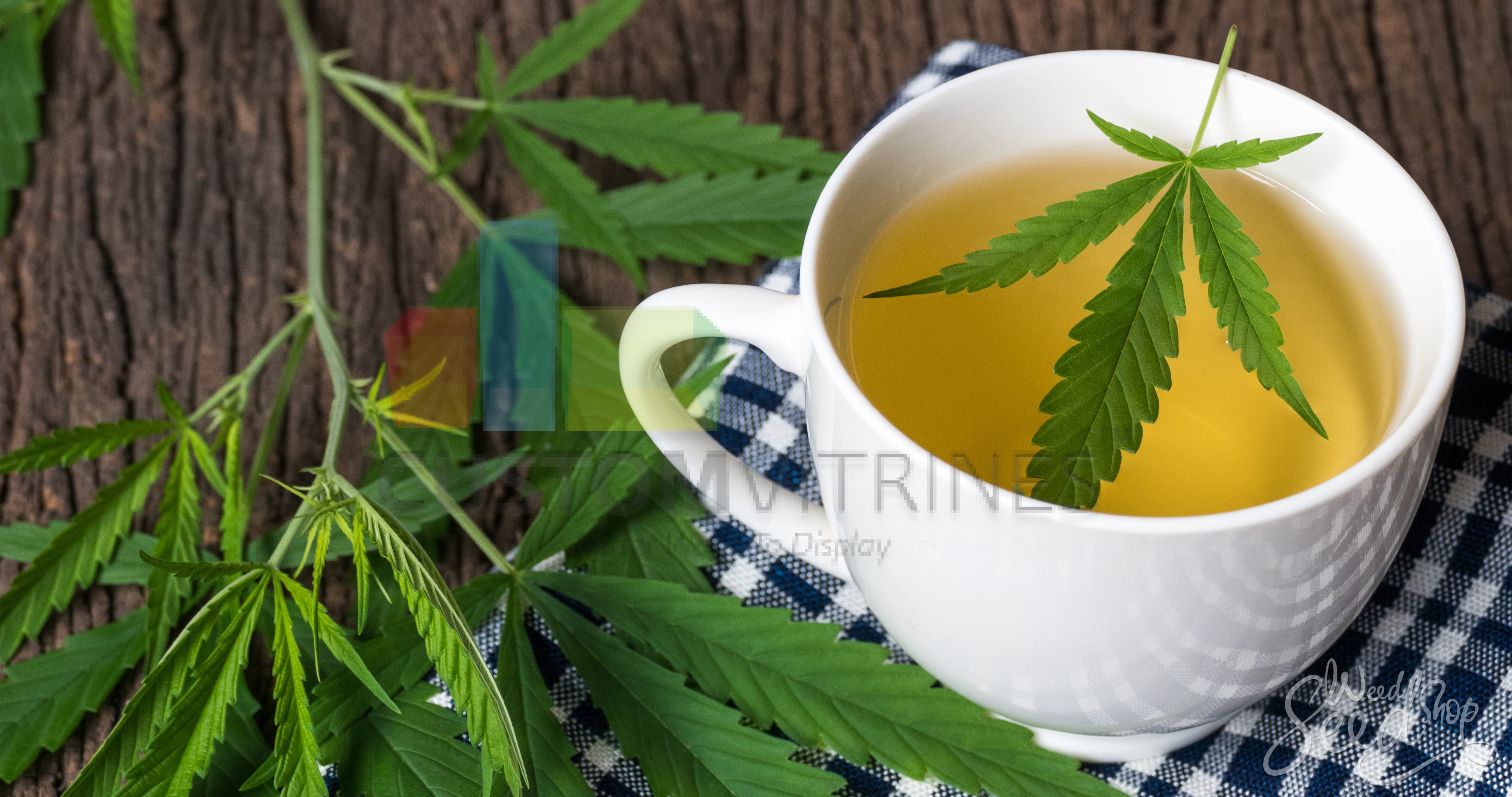
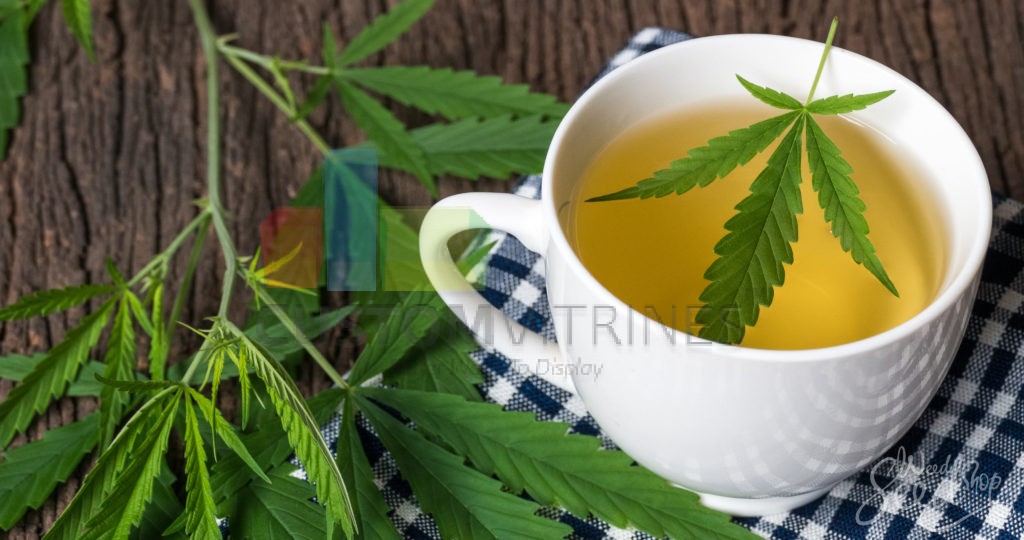
Consumers are tilting their focus from cannabis edibles to drinks, making it a 600+ million-dollar market.
A cannabis-infused drink is a drink that has been infused with cannabinoids. Business Insider predicted the global cannabis drink market to be worth more than 600 million dollars in the next three years. Cannabis infused drinks have largely impacted the beverage industry. From small industries to big corporate houses, everyone is jumping on board to capitalize on the global cannabis drinks market. Chefs and scientists are coming up with new and unique ways to infuse cannabis into various beverages. Today we have cannabis-infused water, soda, coffee, tea, milk, wine, etc. selling across dispensaries on a large scale. Cannabis Drinks Expo team has hence curated a list of top cannabis-infused drink which you must try.
Cannabis-Infused Sauvignon Blanc
Rebel Coast Winery produces alcohol-free cannabis-infused Sauvignon Blanc. Rebel Coast Winery`s Cannabis Infused Sauvignon Blanc is a crisp, clean California Sauvignon Blanc without the taste or smell of cannabis. It contains high acid, with bright citrus, and a crisp clean finish.
Non-Alcoholic Cannabis Infused Wines
Hill Street Beverage Company is a Producer of Non-Alcoholic Beers and Wine alongside Non-Alcoholic Cannabis Infused Drinks. Hill Street is based out of Toronto, Ontario Canada. They produce Alcohol-free Wine and Beers. They are also entering Cannabis Infused Drinks Matter Soon.
Cannabis Infused Cocktails
The Tinley Beverage Company believes in a new, healthy and delicious way to enjoy the benefits of smoke-free cannabis. Their Tinley™ Cocktails and Tinley™ ’27 products have reduced the amount of sugar and calories than their beverage alcohol counterparts. Tinley drinks are created with cannabis strain varieties that are asked for by consumers, in harmony with their range of contemporary lifestyles and tastes.
Cannabis Infused Beverages
Keef Brands produces, and distributes multiple cannabis-infused product lines through various brands like the Keef, OilStix, and VitaCanna brands. These brand`s products include beverages, edibles, and CO2-extracted oil for vape cartridges. Other edibles that can take up to two hours to take full effect but Keef’s cannabis-infused beverages offer full effects in as little as 15 minutes of consumption, leading to a more real-time and responsible consumption experience.
Cannabis Infused Coffee and Tea
Cannabiniers is a foodservice, technology & brand management company that is revolutionizing the cannabis industry with patented, safe and natural flower-based extraction technology and products.
Cannabiniers brands include:
- Two Roots Brewing Co.
- Just Society Coffee & Tea Co.
- Bask
Cannabis Infused Energy Drink
Cannabis Energy Drink combines high-quality energy drink ingredients with a unique sweet flavor which is complemented with hemp seed extract. It contains caffeine, taurine and a bunch of vitamins, the cannabis energy drink does what it does well, and tastes good while doing it. Cannabis energy drink contains no THC and causes no narcotics effect.
Cannabis Infused Herbal Drinks
Mood33 is inspired by ancient herbal remedy, Ayurveda principles, and traditional Chinese herbal medicine. Mood33 infusions were created for mood-based benefits. Mood33 creates cannabis-infused sparkling tonics to suit any mood – choose calm, passion, or joy. Plant-based sweeteners which are used in Mood33 keep the calorie levels low while maintaining fresh, bright, clean flavors–all with a sparkling touch.
Cannabis Infused Soda
California Dreamin is a food and beverage startup that manufactures all-natural cannabis-infused sodas for a light social high. It is made of a combination of fruit juice, cannabis, and carbonation.
Cannabis Infused Sparkling Water
Utopia produces sparkling water with zero calories and zero sugar. The patent-pending technology that produces Utopia Sparkling Water makes sure of a taste and odour-free cannabis emulsion.
Hemp Based Beverage
Joybird Hemp Beverage harnesses the power of Hemp Extract to help consumers Recover, Focus, and Chill. Joybird’s Hemp Extract is sourced from organic hemp and synthesized into Nanoparticles, to enhance absorption. With Joybird, your body absorbs nearly 100% of the Hemp Extract. Drink one before you start your day to focus, after a hard workout to recover, and at the end of a long day to chill out!
VYBES is an organic beverage made with Hemp CBD (Cannabidiol) with15Mg CBD. Hemp-derived CBD helps our body naturally achieve homeostasis by regulating our anxiety, stress, mood, sleep, memory, and other key functions. CBD is a non-psychoactive gift from mother nature. Drinking VYBES has the power to improve your emotional well-being and achieve homeostasis.
Recess is infused with hemp extract and adaptogens, which is powerful and contains natural ingredients that help us adapt to stress and replenish our bodies’ endocannabinoid system which regulates our mood to help us achieve a balanced state of mind.
Cannabis, CBD and Marijuana information
https://apothecarium.com/2017/07/cannabinoids-the-unsung-heroes-of-medical-cannabis/
https://www.bostonmagazine.com/news/2019/08/08/nantucket-cannabis-dispensary/
https://www.thegreenladydispensary.com/blog/2020/7/23/the-miracles-of-medicinal-marijuana
https://www.health.harvard.edu/blog/medical-marijuana-2018011513085
https://www.verilife.com/blog/guide-cannabinoids-and-their-effects
A MESSAGE FROM SOCIETY AWARDS

https://societyawards.com/blog/black-lives-matter/

This is a pivotal time in our nation’s history. The attention of our nation has widened from the COVID-19 pandemic to a more sinister infection, that of systemic racism, injustice, and brutality against black people in America. And while the stories, images, and pain have become omnipresent over the last several weeks, we know that this is no new issue—it has endured for as long as this country.
There is great hope in the bravery and endurance of a long overdue collective outrage. The dedicated efforts of protesters and organizations like Black Lives Matter, NAACP, Campaign Zero and myriad others are moving these vitally important and painful realities into the public consciousness in a way that feels unlike any other time in recent history.
We are so grateful to be a part of some of the most prestigious multicultural awards in the world. From creating trophies for NAACP Image Awards to the BET, the American Black Film Festivals and the Stellar Gospel Awards to the National Society of Black Engineers, we see and etch the names of many of the world’s most influential people.
Hardly any gesture could feel sufficient in the face of so important a movement. There is a lot of work to do yet. We are starting with a donation to the NAACP. Additionally, our annual scholarship program will reopen in the Fall and will, with the help of the NAACP Hollywood Bureau, be awarded to three black students preparing for careers in the arts.
Best Way To Store Guns Without A Safe
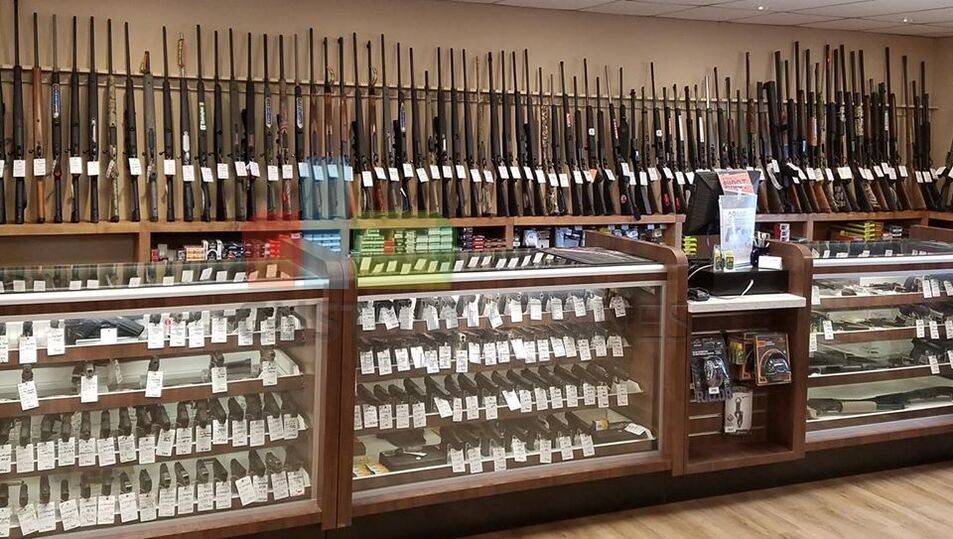
https://howtohomesafety.com/best-way-to-store-guns-without-a-safe/
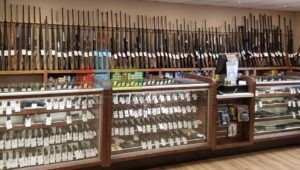 Guns are an interesting group of tools. On one hand, they are artistically made, with the various parts serving different purposes. These beautiful items may cause injury, or even end a life. So, what do we do to ensure that we strike a balance between safety and beauty?
Guns are an interesting group of tools. On one hand, they are artistically made, with the various parts serving different purposes. These beautiful items may cause injury, or even end a life. So, what do we do to ensure that we strike a balance between safety and beauty?
Which is the best way to store gins without a safe? Even more important, how can we ensure that the weapons are easy to reach in case of an attack in our homes?
The answer lies in proper gun storage. When you store your weapon properly, it is easy to reach whenever the need arises. Also, you can keep other people safe by making sure that the gun does not go off by accident, or mishandled by an amateur.
Table of Contents
You need to keep the gun in proper condition to protect it from third-party access. Some people think that safes are the only options when it comes to gun storage. What if you do not have a safe? How will you store your gun?
A safe is a strong form of storage, preventing any unwanted persons from accessing your firearm. On the other hand, safes are expensive, and they are tedious to install. So what are the other options aside from safes?
The following options will present you with methods you can use to store guns without having to pay high prices or suffer the tasking process of having a safe installed at your house.
These methods are simpler to use and are guaranteed to keep your gun in top shape and away from unauthorized users.
Using A Gun Storage Bag
Gun storage bags are bags that are designed to protect your gun from external damage. They have a number of features that make them suitable for this job. Also, there are several factors that you should take into consideration to make sure that your bag is the appropriate one for the kind of gun you own.
Of course, the first thing you should have in mind is the size of your gun. If you own a small gun, then a small, compact bag would be the appropriate choice.
Avoid buying a big bag because it will not hold the gun as securely as it should. Of course, guns like rifles should be stored in bigger bags to allow easy placement and removal.
Next, ensure that the bag is built to withstand an external force, and internal movement as well. You can start by selecting a bag with firm padding on its interiors.
This will protect your gun from damage whenever the bag is hit or accidentally gets dropped.
Proper padding will also prevent external elements such as moisture from reaching the gun. Moisture could corrode your gun and hamper its effectiveness.
Gun storage bags have a number of advantages.
• You can use them to carry the gun around
• You can easily retrieve your gun
• They protect the gun from external damage
• They do not take up too much space
• However, they also have some drawbacks:
• The gun is easily accessible to strangers as compared to when one is using a safe
• You cannot use them to effectively display a gun collection
That being said, gun storage bags are a very good option, especially for people who often carry their firearms around.
It is wise to make sure that the bag is accessible if your gun is for defense purposes. If not, keep the storage bag in a safe way, away from access to persons such as children.
Using a gun storage cabinet
Gun storage is a good option if you want to show off your gun collection. This is because it is designed with an opening you can see through. The type of cabinet you select will be based on several factors.
For example, how many guns do you intend to store in the cabinet? Also, how much space would you like the cabinet to take up?
Storage cabinets come in a variety of designs. If you are looking for an attractive way to display your guns, then you may want to choose a cabinet with beautiful patterns. If not, then a simple, strong cabinet will serve the purpose.
Obviously, you should select the cabinet size before you go out shopping. The size will depend on a number of factors. According to Wikihow, these factors might include the space you have for the cabinet.
If your house is large with lots of space, then a big gun cabinet will leave you with plenty of space to place the rest of your furniture. If your living space is limited, then it is wise to choose a cabinet that will not take up too much.
As we saw earlier, guns are very sensitive to external temperatures, as well as moisture. It is wise to make sure that your cabinet protects your gun from these elements. For example, the cabinet should not let in moisture because it could lead to the corrosion of your weapon.
To prevent this, make sure that your cabinet is well bounded, especially at the opening. Otherwise, moisture could find its way inside the cabinet and cause some serious damage.
The interior of your cabinet should also be constructed in the right way. Make sure that the interiors are well lined to prevent any physical damage to the guns by external forces.
For example, you could choose to have your interiors padded. This would be an excellent choice because it protects the guns from friction with the cabinet surface. Choose padding that separates the guns from each other, because if they rub against each other constantly, they may wear out.
The biggest disadvantage that comes with storing your weapons in a gun cabinet is that the guns are always on display. This means that other people can view them, and access them even without your permission. To avoid this, it is paramount that you put a lock on the cabinet.
Of course, the lock should be secure enough to keep out strangers and children. Keep the key to the cabinet in a safe place, and one that will be easy for you to reach whenever you want to open the cabinet.
Using a gun storage case
A gun storage case is a strong box that is designed to keep your gun secure, and well hidden from other people. If you choose to store your gun in a case, then it is important that you know a number of things.
First, make sure that the case is well lined on the inside. This is important for a number of reasons.
• It prevents moisture from reaching your gun.
• It secures your weapon in place.
• It protects the gun from damage if the case is moved or dropped.
• It preserves the exterior of the gun.
Second, you should keep the gun case in a safe place. Selecting a safe location for your gun will ensure a number of things.
One, the gun will not be easily accessed by people who do not have your permission. This is very important. If the wrong person gets your gun, they could end up hurting themselves.
Also, the person may injure others if the weapon discharges. Being in possession of a gun without a license is illegal, and you could suffer consequences if a person gets your firearm illegally.
Two, the gun will not be used by a burglar to harm you, or your family members. If you keep the case in an open place, people who break into your house can easily access the weapon and fire it with the intention of injuring or killing you. That is why it is wise to keep your weapon well concealed,
Third, you will be able to reach the gun easily whenever you need to use it. While it wise to keep your gun well-hidden and safe, what happens when you really need it and you cannot access it?
To prevent such an occurrence, keep the gun easily within reach, but also properly hidden from strangers. This way, you can quickly retrieve it if the need arises.
Wherever you choose to store your gun, wrapping it before storage is very important. This is done to protect your gun from damage. You should consider several things when wrapping the firearm.
For example, the wrapping should keep moisture away, not attract it. Therefore, make sure that whatever wrapping you use is not made out of absorbent material.
Experts also recommend that you place a moisture-absorbing chemical inside the storage container, to ensure that any moisture that seeps in is contained before it reaches the gun.
Gun Storage Basics
Conclusion
Why is it important to store your gun safely? A wrongly placed weapon could actually lead to accidental death or injury.
Safes are very good ways to store guns, but you may not have the resources or the time to get a safe in your house. Also, a safe may prevent you from displaying your weapon, or reach it easily in an emergency.
To avoid all this, be a responsible gun holder and follow the above tips on the best way to store guns without a safe.
What Is The Difference Between A Gun Belt And A Regular Belt?
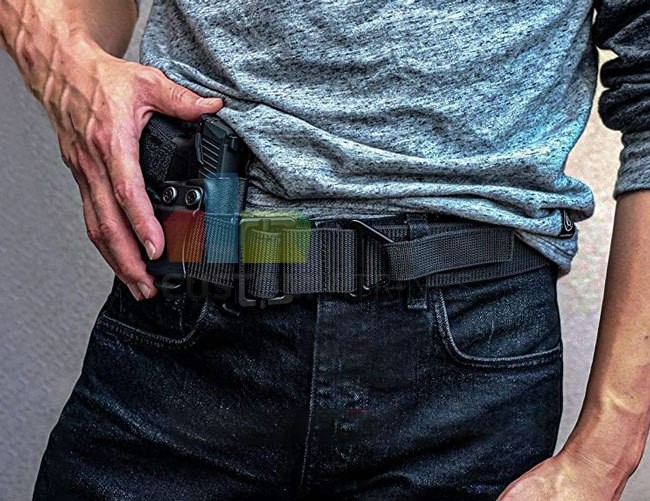
https://gunbelts.com/blog/difference-between-gun-belt-and-regular/
 What Is The Difference Between A Gun Belt And A Regular Belt? Nov 19, 2020 0 What’s The Difference Between A Gun Belt And A Regular Belt? The difference between a gun belt and a regular belt is that a gun belt is made strong enough to support a pistol and holster, along with any other accessories. Your standard department store belt is not. The typical department store belt lacks the material necessary to have enough tensile strength and rigidity to hold up much more than your pants; a gun and a holster are right out of the equation. To do that, a gun belt has to be made with different materials, and has to be made a bit larger, a bit stiffer, a bit thicker, than your typical fashion belt. How so? Let’s go over that. Leather Gun Belts Use More And Different Leather A leather gun belt is still a leather belt…but it’s made a bit differently than the typical leather belt you’ll find in a department store. For one, the leather is different. You have to use a different kind of leather, or at least made differently, than the typical leather belt that you’d use to just hold up your pants. Most department store belts are what is called “genuine leather.” It’s leather…but that’s about all that can be said about it. Genuine leather is typically the less-desirable parts of the hide that have been split from the grain, which is the topmost layer of skin. Some genuine leather is dyed, but a lot of it is painted. You’ll notice the belt cracking and flaking with use; that’s a leather product that’s been painted instead of dyed, like leather products that are of actual quality. Genuine leather also lacks the hardiness of grain leather, which is the hard outer layers of the skin of the animal. Because more strength is needed, full-grain or top-grain leather is used to make leather gun belts. Leather gun belts are also usually vegetable-tanned, meaning the hide is preserved and treated with organic compounds found in actual plants like oak or birch bark. Vegetable tanning usually produces stiffer leather, whereas oil tanning and chrome tanning tends to create softer leathers. Vegetable tanned leathers, such as English bridle leather, is typically used for working applications like work boots, holsters and horse tack. Additionally, leather gun belts tend to be thicker, with the most common construction being dual layers of 14-oz leather; typical department store belts are, at most, only a single layer of 14-oz leather, if not 12-oz or thinner. Some are also given a reinforcing layer for additional rigidity, such as a spring steel core. So…your typical gun belt is made with more leather and better leather than your typical fashion belt. Web Belts Use A Whole Other Kind Of Web…And More Of It As far as web belts (aka tactical belts) are concerned, the idea is much the same. A different, stronger material and at that more of it. The typical web belt from a store is a soft, elastic nylon webbing that stretches when you pull it. There’s only a single layer of it, and a rather flimsy brass or aluminum claw-style fastener. The typical tactical belt, whether it’s a rigger’s belt or lower-profile EDC belt…is a different animal altogether. Instead of soft web, hard woven nylon webbing essentially similar to cargo straps or scuba webbing is used. Just like with leather belts, dual layers is the standard practice. By comparison, leather has a tensile strength of a few hundred pounds; scuba webbing can have a tensile strength of nearly 2000 lbs, depending on the webbing used. In other words, the typical web belt found in stores…is just not nearly as strong. Additionally, you’ll find much more strenuous hardware. Some belts feature AustriAlpin hardware which is actually rated for mountaineering and on a belt, is arguably overkill. A cheesy tin claw…just isn’t going to have the same structural integrity. In other words, a cheap web belt and a tactical web belt are both technically made of nylon webbing…but one of these things is not like the other! A Gun Belt Is Made To Do More So, as you have likely gathered, a gun belt is different from a typical fashion belt in that it is made to be stiffer, stronger and to hold up more weight. A gun belt is purpose-made to be able to carry the weight of a gun plus a holster, and hold them in place while the user is out and about. The typical fashion belt is just not, and that’s why everyone and their brother says that you need a gun belt if you’re going to carry. Think of it this way. The typical commuter car can actually pull a light trailer if fitted with a trailer hitch, even a small boat like, say, the kind of aluminum hull boat with a modest outboard that lots of people use to go fishing or duck hunting. However, the typical commuter car cannot haul a fifth-wheel trailer. For that, you need a pickup truck, and one with enough torque (and importantly, large enough brakes!) to effectively pull and stop such a load. The former is a tool that could be used for a task, the latter is a tool MADE for the task. That’s the difference. Granted, that doesn’t mean a typical leather belt for wearing with dress pants can’t be a quality item for what it’s made to do. Allen Edmonds makes great shoes, but they aren’t work boots and you wouldn’t want to wear them for backcountry hunting. Gun belts are made thicker, harder and stronger than typical fashion belts, because they’re made to carry more than just your pants. They’re made to hold a pistol and holster, and create a stable platform on the waist to draw from and reholster to. So make sure you get the right tool for the task.. Continue reading at.
What Is The Difference Between A Gun Belt And A Regular Belt? Nov 19, 2020 0 What’s The Difference Between A Gun Belt And A Regular Belt? The difference between a gun belt and a regular belt is that a gun belt is made strong enough to support a pistol and holster, along with any other accessories. Your standard department store belt is not. The typical department store belt lacks the material necessary to have enough tensile strength and rigidity to hold up much more than your pants; a gun and a holster are right out of the equation. To do that, a gun belt has to be made with different materials, and has to be made a bit larger, a bit stiffer, a bit thicker, than your typical fashion belt. How so? Let’s go over that. Leather Gun Belts Use More And Different Leather A leather gun belt is still a leather belt…but it’s made a bit differently than the typical leather belt you’ll find in a department store. For one, the leather is different. You have to use a different kind of leather, or at least made differently, than the typical leather belt that you’d use to just hold up your pants. Most department store belts are what is called “genuine leather.” It’s leather…but that’s about all that can be said about it. Genuine leather is typically the less-desirable parts of the hide that have been split from the grain, which is the topmost layer of skin. Some genuine leather is dyed, but a lot of it is painted. You’ll notice the belt cracking and flaking with use; that’s a leather product that’s been painted instead of dyed, like leather products that are of actual quality. Genuine leather also lacks the hardiness of grain leather, which is the hard outer layers of the skin of the animal. Because more strength is needed, full-grain or top-grain leather is used to make leather gun belts. Leather gun belts are also usually vegetable-tanned, meaning the hide is preserved and treated with organic compounds found in actual plants like oak or birch bark. Vegetable tanning usually produces stiffer leather, whereas oil tanning and chrome tanning tends to create softer leathers. Vegetable tanned leathers, such as English bridle leather, is typically used for working applications like work boots, holsters and horse tack. Additionally, leather gun belts tend to be thicker, with the most common construction being dual layers of 14-oz leather; typical department store belts are, at most, only a single layer of 14-oz leather, if not 12-oz or thinner. Some are also given a reinforcing layer for additional rigidity, such as a spring steel core. So…your typical gun belt is made with more leather and better leather than your typical fashion belt. Web Belts Use A Whole Other Kind Of Web…And More Of It As far as web belts (aka tactical belts) are concerned, the idea is much the same. A different, stronger material and at that more of it. The typical web belt from a store is a soft, elastic nylon webbing that stretches when you pull it. There’s only a single layer of it, and a rather flimsy brass or aluminum claw-style fastener. The typical tactical belt, whether it’s a rigger’s belt or lower-profile EDC belt…is a different animal altogether. Instead of soft web, hard woven nylon webbing essentially similar to cargo straps or scuba webbing is used. Just like with leather belts, dual layers is the standard practice. By comparison, leather has a tensile strength of a few hundred pounds; scuba webbing can have a tensile strength of nearly 2000 lbs, depending on the webbing used. In other words, the typical web belt found in stores…is just not nearly as strong. Additionally, you’ll find much more strenuous hardware. Some belts feature AustriAlpin hardware which is actually rated for mountaineering and on a belt, is arguably overkill. A cheesy tin claw…just isn’t going to have the same structural integrity. In other words, a cheap web belt and a tactical web belt are both technically made of nylon webbing…but one of these things is not like the other! A Gun Belt Is Made To Do More So, as you have likely gathered, a gun belt is different from a typical fashion belt in that it is made to be stiffer, stronger and to hold up more weight. A gun belt is purpose-made to be able to carry the weight of a gun plus a holster, and hold them in place while the user is out and about. The typical fashion belt is just not, and that’s why everyone and their brother says that you need a gun belt if you’re going to carry. Think of it this way. The typical commuter car can actually pull a light trailer if fitted with a trailer hitch, even a small boat like, say, the kind of aluminum hull boat with a modest outboard that lots of people use to go fishing or duck hunting. However, the typical commuter car cannot haul a fifth-wheel trailer. For that, you need a pickup truck, and one with enough torque (and importantly, large enough brakes!) to effectively pull and stop such a load. The former is a tool that could be used for a task, the latter is a tool MADE for the task. That’s the difference. Granted, that doesn’t mean a typical leather belt for wearing with dress pants can’t be a quality item for what it’s made to do. Allen Edmonds makes great shoes, but they aren’t work boots and you wouldn’t want to wear them for backcountry hunting. Gun belts are made thicker, harder and stronger than typical fashion belts, because they’re made to carry more than just your pants. They’re made to hold a pistol and holster, and create a stable platform on the waist to draw from and reholster to. So make sure you get the right tool for the task.. Continue reading at.
CANNABIS RETAIL DISPLAY CASE BUSINESS in ILLINOIS
Illinois Cannabis Processors Poised for Solventless Extraction & Rosin
https://gopurepressure.com/blogs/cannabis-news/the-illinois-cannabis-market-rosin
Adult use cannabis laws took effect in Illinois on January 1, 2020. In the first few weeks of sales, the state has seen a rush of customers, leading to a surge in medical cannabis applications amid fears of shortages and a desire for lower sales taxes. While that may seem like a downer note, a shortage is common early on and often serves as a point in the state’s early market developments. Usually, states rebound and recover on their way to establishing a thriving market.
Many expect this to be the case in Illinois, where many predict that the state will couple with Michigan to help establish the Midwest as sales leaders in the American cannabis market. Applications for specific licenses have been well underway. And it is expected that extraction and processing licenses could be handed out in July of this year.
Whether entering into the extraction space or elsewhere, entrepreneurs need to take warning of the fierce competition expected. With a likely booming market on the horizon, several experts forecast “stiff competition.” Chicago and its surrounding area, as expected, will be site to much of the competition, with 63% of retail cannabis licenses going to the region in 2020. Dispensaries across the state will have to fight for customers, with the state averaging 1.5 licensed sales locations for every 100,000 citizens.
Despite the rather slim ratio, demand should eventually satisfy much of the market. Consulting firm Freedman and Koski estimate yearly demand to reach 350,000 to 550,000 pounds of dried cannabis. That said, the firm warns that the market could be slow to grow at first, noting trends that other states followed. These trends include the illicit market continuing to thrive for some time until legal market prices decline to competitive levels.
Those that can weather the rounds of storms and position themselves correctly could find their venture with a significant market share of the estimated $2.5 billion dollar a year market awaiting Illinois.
Illinois appears poised to be a destination for competition and success for those that come out on top. We believe that rosin and other solventless products will be vital in offering businesses a superior ROI at a fraction of the startup costs compared to a solvent-based venture.
In this article, we’ll delve into how Illinois got here, possible setbacks to expect and just why your business should include solventless cannabis products in its portfolio of products.
The Development of Illinois’s Cannabis Market
Illinois, technically, was one of the earliest adopters of cannabis legalization after the drug prohibition took effect in the 1930s. In 1978, the state passed the Cannabis Control Act, which allowed medical cannabis use. Keep in mind the word “technically.” In reality, two key hurdles made it so the state Department of Human Services did not have to require doctors to give medical cannabis recommendations. Nor did is allow the program to act outside of the state police’s written laws. Meaning, the law was mainly passed in spirit.
While the CCA of 1978 laid dormant all these years, Illinois did join the more recent medical marijuana wave, enacting legislation in 2013. The state followed up by passing decriminalization laws two years later in 2016.
On May 31, 2019, the state took its next step forward when the General Assembly legalized adult use laws with the passage of the Cannabis Regulation and Tax Act. The bill would become law in August when Governor J.B. Pritzker signed off on the expansion. Now in its infancy, the Illinois cannabis market appears to be falling in line with the path of its predecessors. If it continues to follow such a way, the demand for rosin and other solventless concentrates in Illinois should represent the likely lucrative opportunities for ventures ready to stake their claim.
Opportunities Expected in the Illinois Cannabis Market
While the headline is accurate, the opportunities in Illinois could be limited to a choice few. In addition to limited availability, the state appeared to show no interest in making the application process easy on prospective owners.
Some state policy experts on the matter described the application process as a rather trying process. Applicants should expect to be asked for a variety of documents when submitting for a license. Such materials include business plans and a list of owners and operators as well as their expertise. Additional information pertaining to record-keeping and employee training is also expected to be submitted with an application.
When submitting, businesses can apply for one of four types of cannabis operations:
- Dispensary
- Cultivator (Craft and Grow Ops)
- Processor
- Transporter
The state opened its application window for processors, transporters and craft growing, which it will begin reviewing on February 14. Illinois plans to begin processing these licenses on March 15, 2020. It is expected that new dispensary licenses will go out first, starting in May, while craft grower, processor and transporter licenses will go out in July.
The rollout of the licenses may not be such a cause for celebration. Illinois opted to follow a path many states have and cap the number of licenses issued to the nascent market. In the dispensary space, 55 licenses have been issued by the state, with another 75 coming via the May issuing mentioned above. An additional 110 will go out on New Year’s Day 2021, totaling 300 dispensary licenses in the state. Another 200 could come by January 2022. Meanwhile, craft growers are expected to be issued 100 permits.
Other parameters the state enacted include social equity measures, which aim to address some of the adverse effects brought on by the drug war. It has been reported that the state Department of Commerce and Economic Opportunity intends to work with local banks to enact loan programs. These programs plan to provide business mentoring along with the capital to get started.
So, while opportunities may be slim, the competitive nature of the market indicates lucrative gains for those looking to stake their claim in the Illinois cannabis market. The state appears committed to providing access to those most affected while allowing all other applicants to be part of the four license types being offered in the coming months.
With supposed fair access, those that feel as if they qualify should either have their applications in already or get started on it fast. The time invested could prove to produce earned results well beyond your sweat equity.
Analyzing the Market to Date
Heading into the legalization of adult use, Freedman and Koski’s report stated that understanding the prospective market would be challenging, despite many forecasting substantial gains for the state. The report stated:
“Changes in markets (prices, supply, quality, accessibility, etc.) can have dramatic effects on consumer behavior. Under the current proposal in Illinois, not only would consumers have the choice between using or not using cannabis, but cannabis users have alternatives: purchasing from a legal, commercial market; home growing cannabis; or continuing to buy from the criminal market. Those choices are influenced by consumer preference ex ante as well as the dynamics of the market as it matures.”
In addition to the uncertainty of the market, staggering tax rates were quickly pinpointed as significant pain points for businesses and consumers. In some cases, buyers were paying up to an additional 40% on products thanks to the state’s second-highest cannabis tax burden in the legal U.S. market.
Yet, despite the sticker shock turning many to the illicit market, the state proved to rollout a relatively successful debut for the adult use marketplace. Long waits on opening day resulted in exceptional Day One sales, nearly totaling $3.2 million.
The demand became so high that several stores across the state reported running out of product in the first few days of opening their doors. “We knew we were going to run out. It was a matter of when, not if,” said Neal McQueeney, principal officer of Midway Dispensary, to Marijuana Business Daily in the early days of the market’s opening.
By the end of the first week, Illinois saw $11 million in legal cannabis product sales generated. With such opportunity afoot, those fortunate enough to get licenses could likely end up on the receiving end of a windfall gain.
High Time to Consider Entering the Illinois Solventless Market
With processing licenses underway, hopeful applicants need to get their paperwork in line and submitted as soon as they can. Those granted a permit are recommended to explore the possibility of offering rosins and other solventless-derived products in Illinois.
Consider us a bit biased, but solventless is the best concentrated product in today’s market, and now one of its top sellers, too. With a slew of brands and producers looking to stand out, the versatility of a truly chemically-free produced source material is sure to kickstart creative ideation in your team.
Being 100% solvent-free and versatile is all well and good. Still, it’s not a sustainable investment unless the numbers back it up. Fortunately for your business and rosin, there is back up.
According to a 2019 top trends in cannabis report from Arcview Market Research and BDS Analytics, concentrates and edibles continue to see their shares in the market grow with each passing year. In 2017, the two verticals combined to account for $1 billion of the market. In 2019, they reached $2.2 billion. By 2022, the report expects that number to nearly double again, reaching $4.1 billion.
The report went on to show that sales appear prosperous in both the medical and recreational sides of the market. Adult use should drive U.S. and Canadian growth, according to the report”s conservative model projections. Processors would be wise not to overlook the booming CBD market either. As of 2018, concentrates held the second largest market share, only behind ingestibles, with 28% of the market.
That said, those that do receive processor licenses in Illinois should keep an eye out of developing trends in more mature markets. This includes Colorado, where concentrate prices declined 2% over the past three years.
Continued growth over the next 10 years is expected at 6% percent per year and it might go even higher depending on the new licenses for more Cannabis store locations that will be outfitted with custom display cabinet designed to display these new hemp product lines.
www.MarijuanaDisplayCabinets.com
www.CustomVitrines.com
How popular is CBD oil?

https://usacbdexpo.com/2020/10/19/how-popular-cbd-oil/
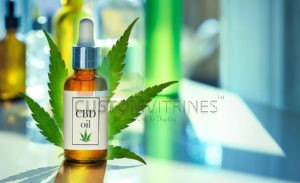
In a recent article, we discussed how CBD has the properties to become something more than a fad. More research is needed, but the existing evidence seems sufficient for many experts and consumers to convince them of its potential. CBD is here to stay.
However, it’s unnecessary to check the medical evidence surrounding the cannabinoid to determine if it will stay in consumers’ minds. Its popularity has grown every year, and it doesn’t seem it will stop in the future.
More popular than Kanye West, The Beatles, and AOC
As of April 2019, there were 6.4 million CBD Google searches, and inquiries increased 160.4% in 2018 compared to 2017, according to the research letter published in the peer-reviewed JAMA Network Open.
CannabisMD, a non-advocacy educational platform, used its Knowledge Navigator, a back-end tool used to survey consumer trends, to measure CBD’s interest on the internet. Their results pointed out CBD’s popularity; it was higher in search results than historically popular topics like Kanye West or The Beatles.
These results are verifiable by anyone just by checking Google’s tool Google Trends. In the last twelve months, CBD is still at the top of many popular inquiries like Taylor Swift or the NBA.
However, other studies suggest the market is going to grow even more. Gallup ran a poll, asking Americans about their use of CBD-related products. The poll revealed that younger Americans are more likely to use CBD products; usage by people under 30 went up 20%.
The lack of CBD knowledge decreased to 26% in people younger than 30, though 35% of the people who took part in the poll confessed they held no familiarity with CBD products.
CBD for anxiety relief was more prevalent among women than men (25% vs. 14%); men preferred to use sleep aid more than women (15% vs. 8%).
CBD isn’t as widespread as other mainstream products—according to the poll, 50% of people that know about CBD haven’t used it—, but 14% of Americans are consuming the cannabinoid. These stats indicate that many curious consumers haven’t taken the step into actually buying the product, making them potential customers.
The wellness trends
CBD searches do not only outnumber celebrities and sports but other sectors of the wellness industry. Google US searches from 2004 to 2019 have been measured by health scientists from the University of California, San Diego, Johns Hopkins University in Baltimore, and the University of York in the UK.
Their study revealed that search volume for CBD started to grow from 2016 significantly, after being relatively constant from 2004 to 2014. Specifically, the growing trend began to manifest at a rate of 125.9% in 2017, 160.4% in 2018, and 117.7% in 2019.
According to the study, CBD is more searched than other wellness trends such as vaccinations, exercise, veganism, and even marijuana.
The popularity will grow
The CBD industry is expected to become a $16 billion industry by 2025 according to Cowen & Co, but Rolling Stone reports a faster growth-rate, estimating that the CBD market could hit $22 billion by 2022. As the compound becomes more popular, and it uses more varied, it is not hard to imagine a future in which CBD becomes a dominant product. The hype is real, and it will stay that way for a long time.
The CARES Act And The Cannabis Industry
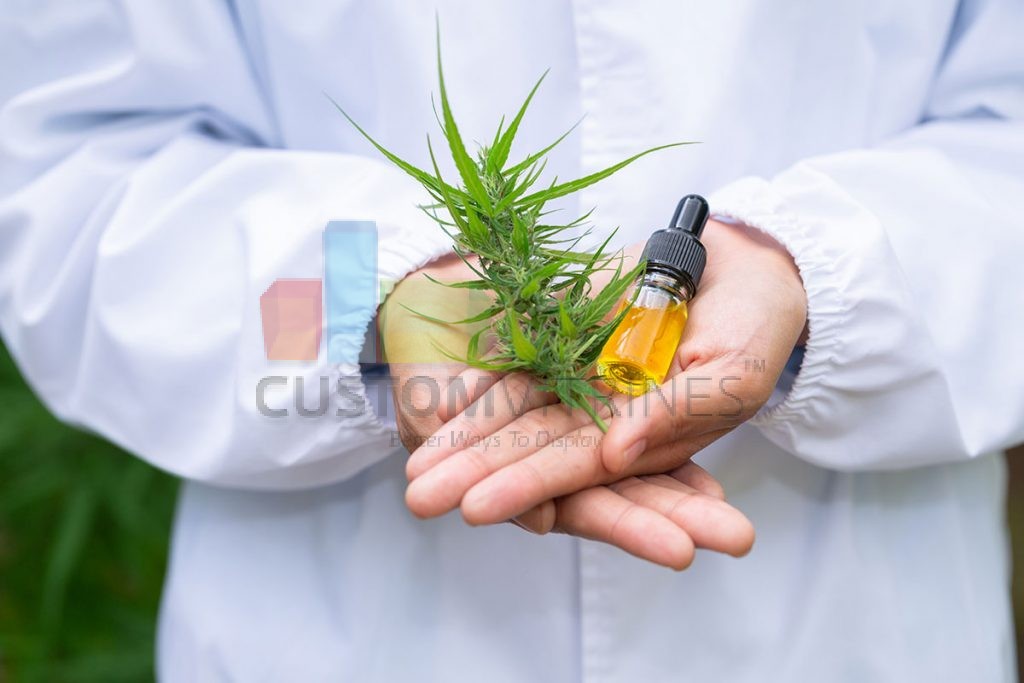

The economy has been left reeling from much of the U.S. being forced to stay home due to COVID-19, and small businesses are being hit the hardest. The Coronavirus Aid, Relief, and Economic Security (CARES) Act is a stimulus package passed by Congress in March that is intended to assist small business owners during this unprecedented time. And yet, neither cannabis business owners nor ancillary service providers to the industry are eligible to receive assistance from the Small Business Association (SBA) because cannabis remains federally illegal. This, despite the majority of U.S. states having enacted legalization in some form, cannabis businesses being deemed essential in multiple markets, and the industry generating over $1.9 billion in excise and sales taxes in 2019.
What The CARES Act Provides
The CARES Act sets aside $376 billion of financial support and other resources for small business owners and workers struggling to stay afloat during the health crisis caused by the coronavirus. Available options include payroll protection, forgivable loan advances, and debt relief, as well as access to free business counseling services. The White House and congressional Democrats are now working on a new $450 billion relief package for small businesses after the first one ran out of money in two weeks. This $450 billion will include $300 billion to replenish the depleted Paycheck Protection Program, $50 billion for the Small Business Administration’s disaster relief fund, $75 billion for hospitals, and $25 billion for testing.
According to the SBA however, businesses that engage in “illegal activity” at the federal, state, or local level do not qualify for assistance. That means not only are cannabis dispensaries, delivery services, cultivation sites, and manufacturers shut out, but so are ancillary businesses – legal, marketing, accounting, and other services – that work indirectly with the industry. There is one notable exception: anyone who owns or provides goods or services to a hemp business is eligible since hemp was made legal under the 2018 Farm Bill.
But, there is hope, last week, Rep. Blumenauer and nearly three dozen of his colleagues sent a letter to House leadership urging them to make cannabis businesses eligible for SBA programs. Senators Jacky Rosen (D-NV) and Ron Wyden (D-OR) along with eight co-signers sent a similar letter to Senate leadership on Wednesday. They have been joined by cannabis industry advocates, the United Food and Commercial Workers International Union, state officials including Colorado Gov. Jared Polis, and others. The Emergency Cannabis Small Business Health and Safety Act would stop cannabis businesses and those that provide services to them from being excluded from further federal relief funding provided through the Small Business Administration (SBA).
What Cannabis Business Owners Can Do
NCIA is among multiple organizations actively pushing for the cannabis industry’s inclusion in federal COVID-19 aid packages, but what can cannabis and ancillary business owners do in the meantime?
• Apply for federal assistance anyway. Whether the federal government likes it or not, legal cannabis is the fastest growing industry in America. There’s no better way for cannabis business owners to reinforce this by pursuing every resource made available to other small businesses during this time. Submit a complete, honest application proving compliance and a genuine need – even if it is denied, it could go a long way towards supporting efforts that ultimately change the policy regarding federal aid.
• Explore state-level funding options. In states where medical or adult-use cannabis is legal, local jurisdictions set the tone for the legal industry. Small banks, credit unions, and even your local SBA office – which may be more willing to assist cannabis companies and ancillary service providers in their local communities – could, therefore, be viable options for owners seeking financial assistance.
• Stay the course. Legal cannabis’ status as an essential business – and the grassroots efforts it took to get there – could be a boon for the industry on the other side of this health crisis. While legalization efforts are essentially paused in the era of social distancing, the legal industry can still hold elected officials accountable and impact change through online petitions, and via email and phone-calling efforts.
5 Trade Show Raffle Prize Ideas for 2020

 https://tradeshowinfotainer.com/blog/5-trade-show-raffle-prize-ideas-for-2020/
https://tradeshowinfotainer.com/blog/5-trade-show-raffle-prize-ideas-for-2020/
Participating in trade shows is a great way to maximize your brand’s exposure, meet with potential clients, and network with colleagues in your industry. As you know if you’ve participated in a trade show, the process beforehand is full of excitement about the potential of the show and preparing how best to utilize your booth to generate leads and potential prospects. Coming up with trade show goals, planning out your booth, and generating ideas for how to attract attendees is all part of the fun!
Although raffles have been around for decades, they are still a fun and important part of today’s trade show booths; however, coming up with great prizes that your attendees are actually interested in might be difficult if you do a raffle at every show. Here are some fun and unique trade show raffle ideas to use in 2020.
Free products or services
Consider offering a free product or service trial from your company as a trade show raffle prize. This one is a win-win: not only is the prize relevant and valuable to your audience, but it will get people to actually try out your product, which can help you generate client leads through the people who participate in your raffle. Hats, t-shirts, water bottles, note pads and binders that feature your company branding can be given away as prizes to raffle winners.
If you offer a service, consider giving away a free trial; it’s a great way to get someone introduced to your business who may not have tried it out otherwise.
Gift cards or cash
Gift cards and cash are ideal trade show raffle giveaways because they are widely used by a variety of people. Offer gift cards to a popular restaurant, store, or spa or for services that may be relevant to the people in attendance at the trade show (Amazon is almost always a big hit at trade shows!).
More than anything, trade show attendees are interested in participating in raffles that offer products and services that they actually use in their everyday lives.
As a bonus, gift cards are very portable which makes it easier for logistics and storing at the show as well as being more convenient for the winner.
Electronics
Electronics are costly trade show raffle prizes. Usually, only companies with large budgets are able to afford them; however, you don’t have to go with the biggest and most expensive electronics out there. Popular electronics giveaways include items like:
• Raspberry Pi’s
• Alexa Echos and Google Homes
• Small TVs
• AirPods/headphones
• Cameras
• Video game consoles
• Wireless chargers
• Tablets
Whichever electronics you decide to go with, make sure they’re within your budget and something appealing enough to really make it stand out among your competition.
Prize or “swag” pack
Some exhibitors go the extra mile to make their prize sound bigger and better by offering anonymous prizes collected together in a “prize pack,” “swag pack,” or something similarly named. This is a good strategy if you have to promote your booth before you’ve actually decided on your prize or game giveaways!
It’s an easy way to lump together multiple items that all have your logo imprinted on them, which is another good branding strategy that helps to build awareness around your brand.
T-shirts
Shirts can be a great giveaway because when attendees wear them, they become walking billboards for your brand. However, remember that your shirt has to be nice enough to avoid getting buried in a drawer! Chances are, more than 4% of exhibitors are offering a shirt as a prize giveaway, but these exhibitors who did tend to offer something more than the average t-shirt. To get your attendees’ attention, try offering performance tees, super-soft tees, or shirts made from recycled materials. Adding a little extra ‘oomph’ to an otherwise typical giveaway goes a long way!

